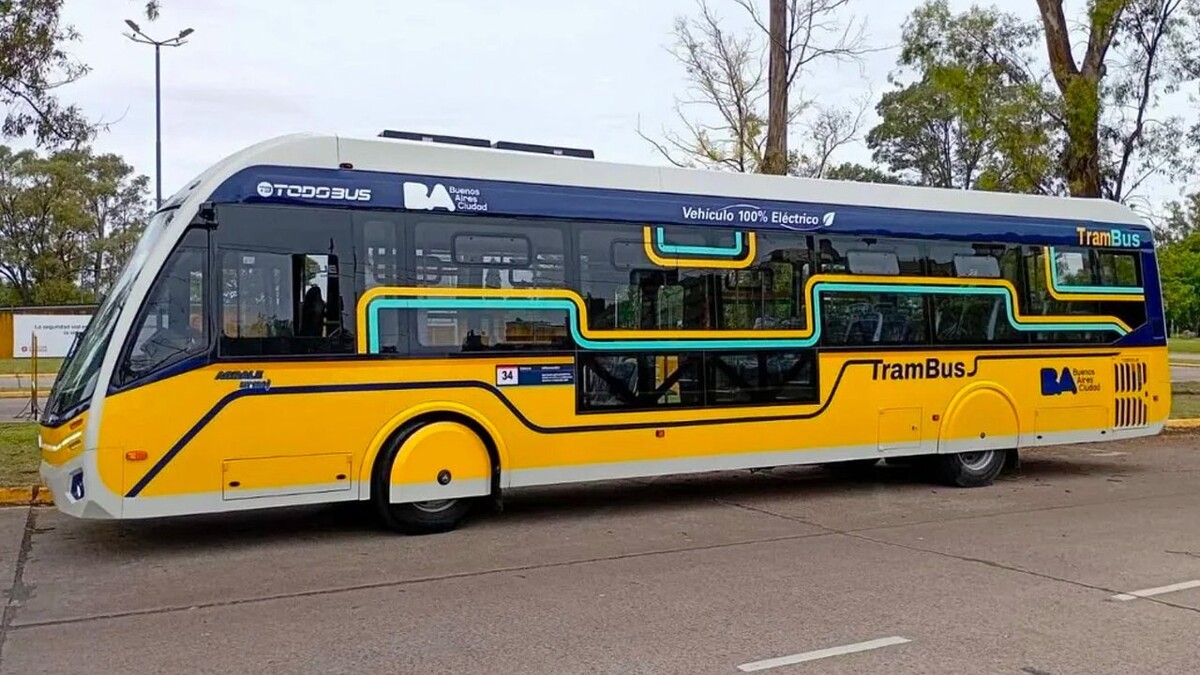
Buenos Aires is testing the city's first electric 'Trambus', a project that combines the efficiency of a high-capacity bus with the advantages of zero-emission vehicles.
According to city officials, the prototype, with a battery of around 400 kWh, would have an average consumption of 2.3 kWh per kilometer, in line with large electric buses. This would allow the Buenos Aires Trambus to cover a full day of urban service without needing a complete recharge midday.
The trial is being conducted on Line 34, along the Juan B. Justo corridor, as part of a pilot program aimed at reducing noise and environmental pollution from urban transport. During this phase, drivers are being trained, electrical systems are being tested, and the vehicle's overall performance is being monitored.
Although there is no official date yet for the start of regular operations, the first technical results are already generating expectations.
**Technical specifications:** * **Range:** approximately 170 kilometers on a full charge, placing it among the best-performing urban models in its segment. * **Maximum speed:** limited to 60 km/h, suitable for corridors with frequent stops and high passenger flow. * **Propulsion system:** 100% electric, with motors on the axles delivering hundreds of kW of combined power. * **Dynamic performance:** offers smooth acceleration without vibrations or emissions, with energy recovery through regenerative braking. * **Passenger capacity:** between 24 and 30 people, depending on the model's configuration; future versions are expected to expand this range.
The official reports do not yet detail the exact chemistry or battery capacity (kWh) for the Buenos Aires electric Trambus. However, based on similar vehicles used in China and Europe, it is estimated that lithium-ion or lithium-titanate cells with liquid cooling and interchangeable modules could be used. These types of batteries are known for their durability and ability to withstand multiple fast-charge cycles without significant degradation.
For recharging, it is expected to combine full overnight charges with partial recharges at terminal stations, using 10- to 15-minute intervals to replenish energy without interrupting service. This 'intermediate charging' strategy allows the operation to be maintained throughout the day, reducing the need for large batteries and extending the system's useful life.













